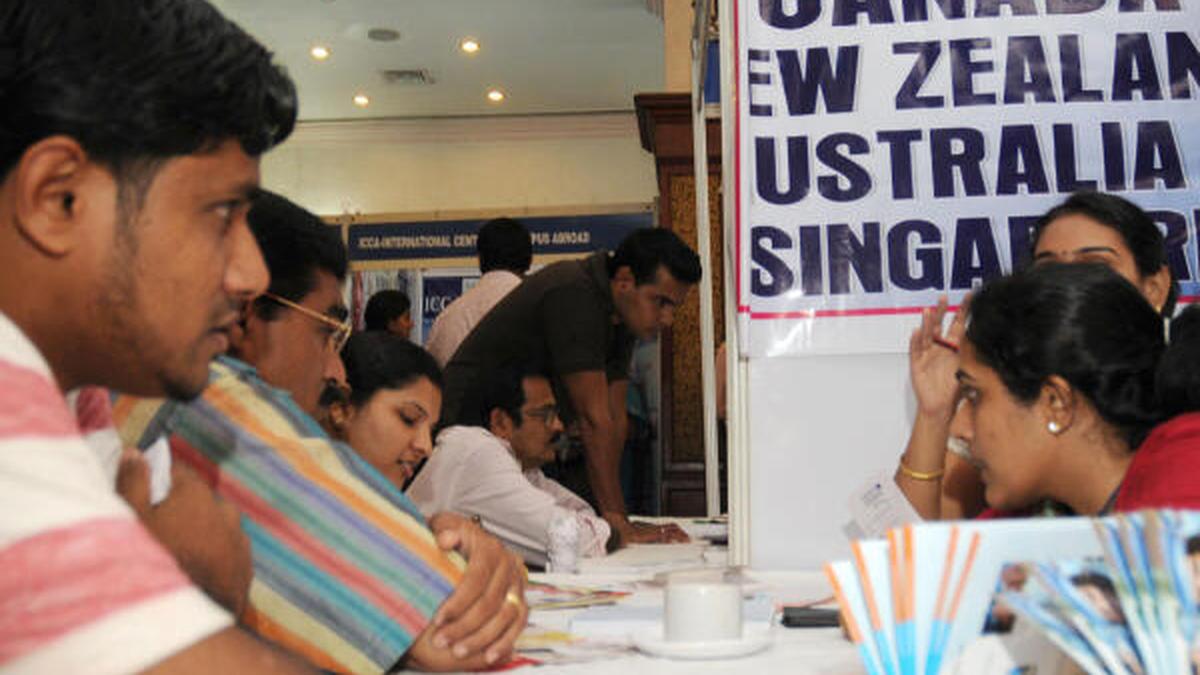
As student emigrants from Kerala double in five years, seats in state universities remain vacant Premium
The Hindu
Kerala Migrant Survey 2023 reveals student emigration trends, vacant degree seats in state universities, and implications for Kerala's future.
The Kerala Migrant Survey (KMS) 2023 had revealed that the number of student emigrants from the state has doubled in just five years. The results were published in June 2024 and the trend has only persisted. The trend of student migration will continue for the next 15 years due to demographic changes and rising aspirations, says S. Irudayarajan, Chairman of the International Institute of Migration and Development.
The number of students emigrating from Kerala has increased from 1.3 lakh in 2018 to 2.5 lakh in 2023. Students now constitute 11.3% of these numbers with younger individuals choosing to emigrate as early as 17. As educational opportunities abroad become an increasingly attractive option for younger individuals, a large number of seats in higher education institutes in the states remain unfilled.
Data from 2023-24 shows that nearly 90,000 degree seats remain unfilled across the State’s universities. Some institutions have as many as 30,000 seats vacant.
The Kerala University has 16,974 vacant seats out of 38,821, while the M.G. University has a staggering 30,352 unfilled seats out of 55,644. The Calicut University has 32,566 vacant seats out of 92,501, and the Kannur University has 8,660 unfilled seats out of 23,149. State-wide, there are 2,10,115 total degree seats, with 42% remaining vacant.
The KMS 2018 survey reveals that student migrants are predominantly from Hindu and Christian communities, with a notable presence of female students from Christian communities. The primary reason for migration is to attain professional degrees, and most student migrants are in the age group of 20-24 years.
The majority of student migrants which is 52.4% of males and 36.3% of females are in the age group of 20-24 years. The KMS 2018 shows that among Hindus, Nair (40.9%) and Ezhava (34.3%) communities have the highest out-migration, while among Christians, the Syrian Malabar Catholic community (50%) has the highest out-migration.
According to S. Irudayarajan, Chairman of the International Institute of Migration and Development, the trend of student migration will continue for the next 15 years, partly due to both demographic change and the growth of the middle class. No other State in India conducts similar types of Kerala migration surveys in their states and there should be at least one migration survey in all States and Union Territories. “During the Russia-Ukraine war, we noted that students from several States were stranded in those places. Special flights were arranged to bring close to 25,000 students from the war zone”, Dr. Irudayarajan says.





















 Run 3 Space | Play Space Running Game
Run 3 Space | Play Space Running Game Traffic Jam 3D | Online Racing Game
Traffic Jam 3D | Online Racing Game Duck Hunt | Play Old Classic Game
Duck Hunt | Play Old Classic Game











